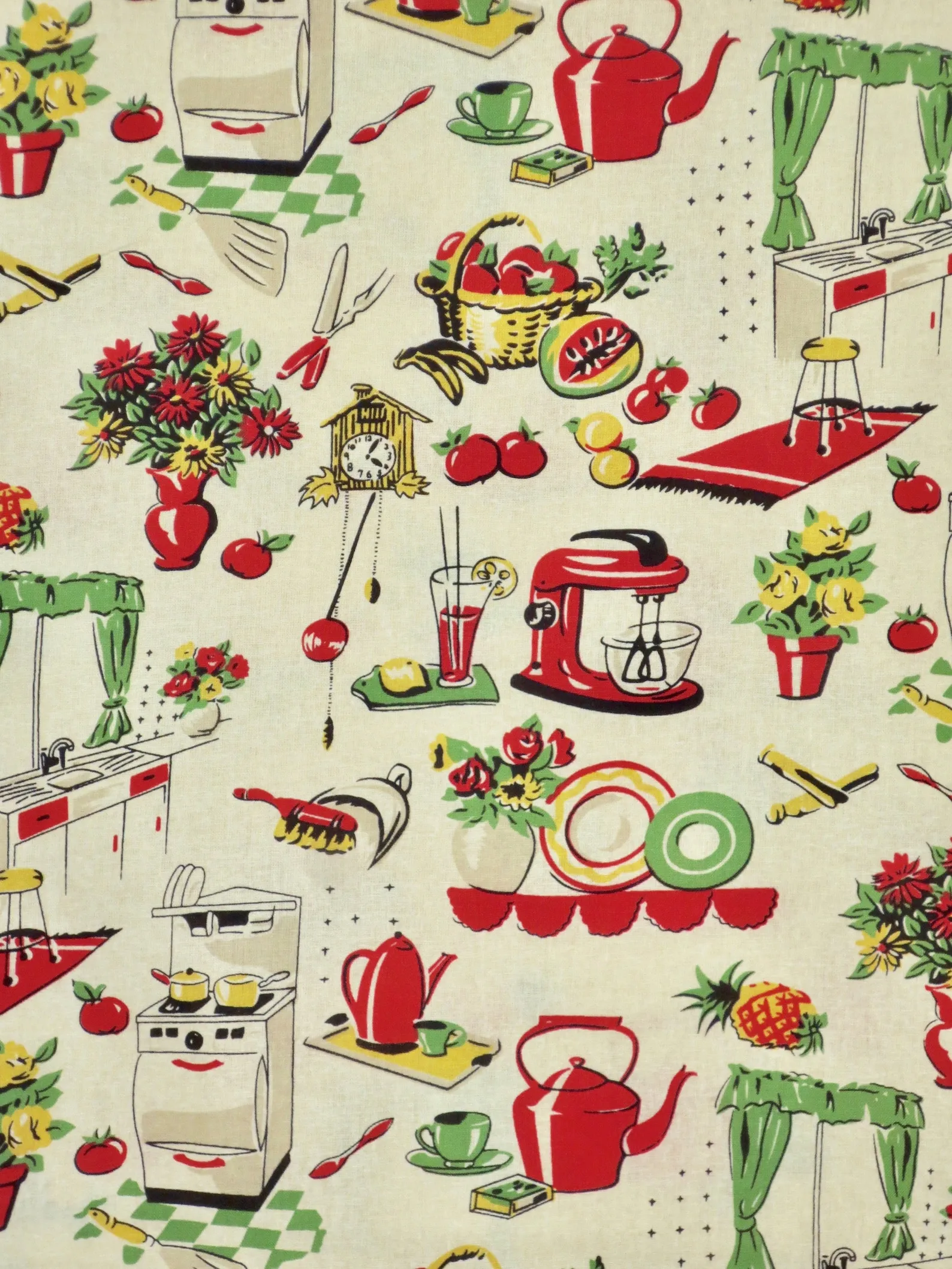Embracing the Charm of 50s Kitchen Decor
Step back in time and infuse your kitchen with the timeless appeal of 50s kitchen decor. This design style is more than just a trend; it’s a celebration of a post-war era marked by optimism, innovation, and a unique aesthetic. The 1950s kitchen embodies a sense of homey comfort, with a focus on functionality and vibrant, cheerful colors. It’s a look that evokes nostalgia, offering a warm and inviting space that is as practical as it is stylish. The goal is to create a space that feels both familiar and fresh, capturing the essence of the decade’s unique design sensibilities. Whether you’re aiming for a complete renovation or just adding a few retro touches, understanding the key elements of 50s kitchen decor is the first step towards achieving that iconic look. Consider how the era’s emphasis on convenience, family, and joyful living can be translated into your modern space, bringing a touch of mid-century magic into your home.
Iconic Design Elements of a 50s Kitchen
Several key design elements define the look of a 1950s kitchen, contributing to its distinctive character. These elements work together to create a cohesive and appealing space, blending functionality with vintage charm. One of the most prominent features is the use of bold and pastel colors, which were central to the era’s design philosophy. Think soft pinks, turquoise, yellows, and mint greens, often paired with white or chrome accents to brighten the space. Another important aspect is the emphasis on clean lines and simple shapes, a hallmark of the mid-century modern aesthetic. This is evident in the design of furniture, appliances, and cabinetry, which often feature streamlined silhouettes and minimal ornamentation. Additionally, the kitchen’s focus on being a family-friendly space with comfortable dining areas and practical storage solutions. By understanding these fundamental components, you can begin to incorporate the essential ingredients of 50s kitchen decor into your own space.
Color Palette of the 50s Kitchen
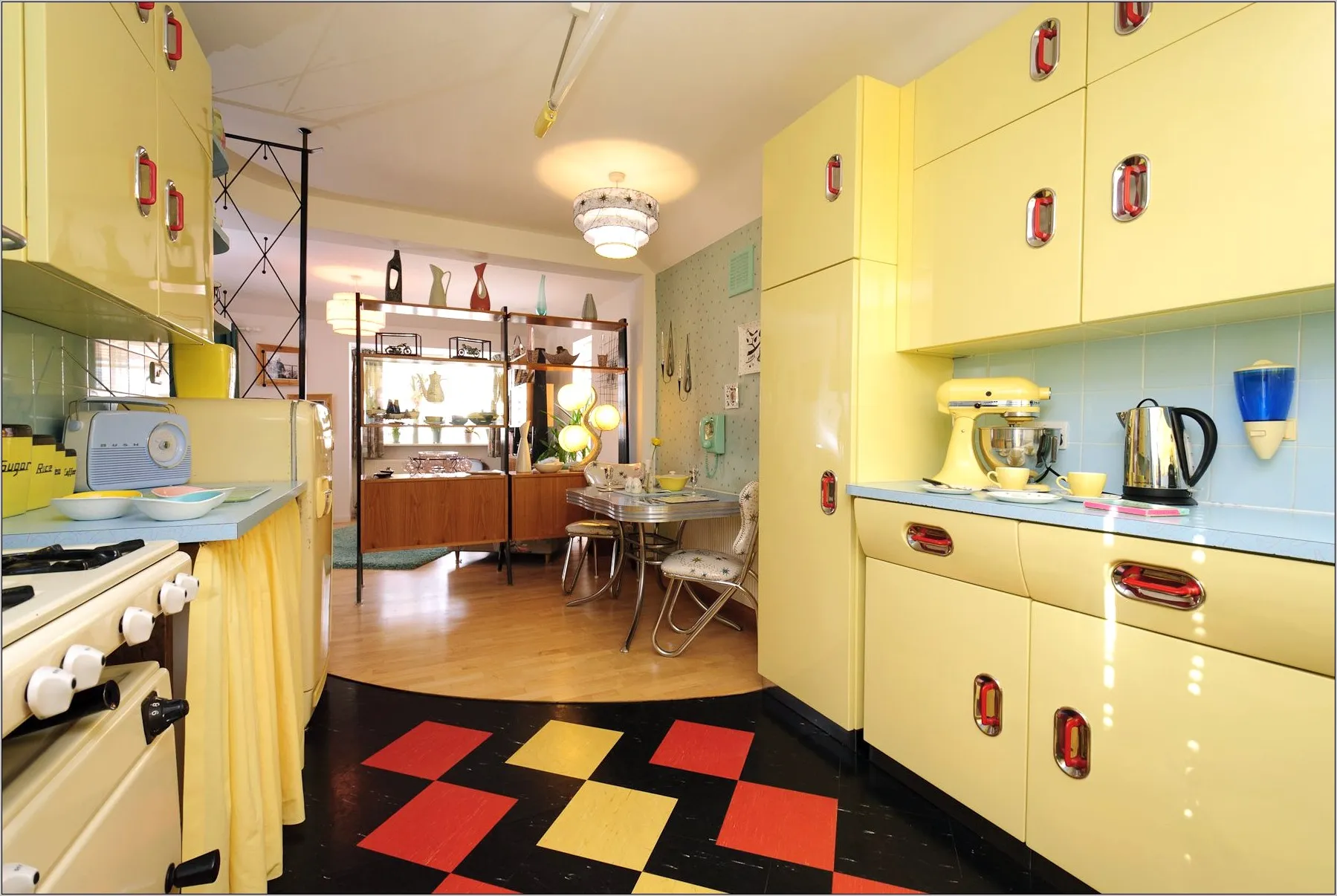
The color palette of a 1950s kitchen is perhaps its most recognizable feature, instantly evoking a sense of nostalgia and retro charm. It’s a world away from the muted tones that often dominate modern kitchens, instead embracing a vibrant and optimistic array of hues. Pastel colors were incredibly popular during this era, offering a soft and inviting backdrop for the kitchen. Think of the gentle blush of a powder pink, the serene coolness of a mint green, or the sunny disposition of a pale yellow. These colors were often complemented by white or chrome accents, which added brightness and a touch of modernity. However, the 50s kitchen wasn’t just about pastels; bolder colors also played a role. Turquoise, red, and even black were used to add accents and create visual interest, often in the form of appliances, countertops, or accent walls. When choosing colors for your 50s-inspired kitchen, consider how they work together to create a cohesive and cheerful space.
Pastel Dreams
Pastel shades form the core of the 50s kitchen color scheme, creating a sense of light and spaciousness. Colors like baby blue, pale yellow, and mint green were frequently used for cabinets, walls, and appliances. These soft hues provided a cheerful backdrop that brightened up the kitchen, making it feel inviting. The use of pastels also reflected the era’s focus on cleanliness and modernity. Often, these pastel colors were combined with white, creating a clean and airy atmosphere. White was used for countertops, backsplashes, and sometimes even appliances, helping to balance the softer hues. The strategic use of pastels, combined with white accents, is a simple yet effective way to capture the essence of the 50s kitchen.
Bold and Bright
While pastels were dominant, bold colors also played a significant role in adding personality to the 50s kitchen. Colors such as fire engine red, turquoise, and even black were incorporated to create visual interest and contrast. These brighter hues were often used for accents, such as cabinet doors, countertops, or appliances. For example, a red refrigerator or a turquoise backsplash could add a pop of color against a backdrop of pastel cabinets. Black and white checkerboard flooring was also a common element, providing a strong contrast and a sense of graphic design. Using bold colors judiciously helped to create a vibrant and energetic atmosphere, adding a touch of drama to the overall design and preventing the space from feeling too saccharine.
Furniture and Appliances Styles
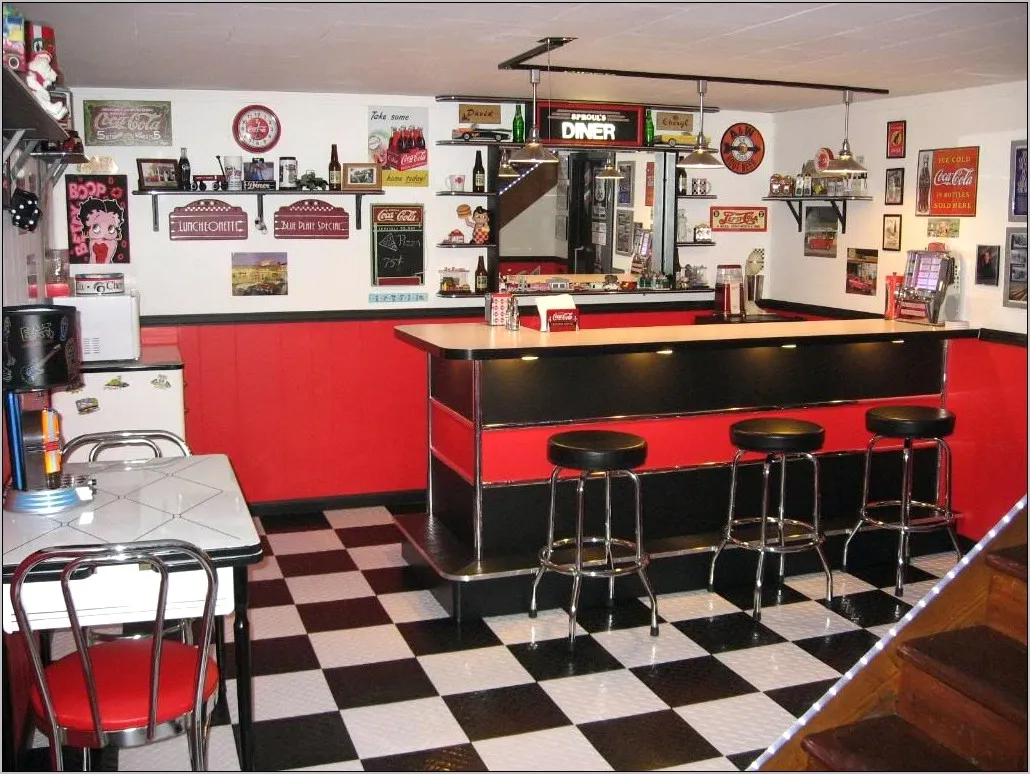
The furniture and appliances in a 1950s kitchen were characterized by a blend of functionality, style, and a touch of futuristic design. The era’s aesthetic was all about clean lines, simple shapes, and a commitment to making domestic life easier and more enjoyable. Appliances were becoming increasingly important, with innovative features designed to streamline the cooking and cleaning processes. Furniture also played a key role, from dinette sets to storage solutions, each element chosen to enhance the kitchen’s comfort and usability. Understanding the specific styles and features of these appliances and furniture pieces is key to recreating an authentic 50s kitchen.
Retro Furniture Choices
Furniture in a 1950s kitchen was often characterized by its streamlined design and functional purpose. Dinette sets were a central element, typically consisting of a table and chairs. The tables often had chrome legs and laminate tops, while the chairs might feature padded seats and backs. Another popular choice was the breakfast nook, which could include a built-in bench or a small table and chairs. The emphasis was on creating a comfortable and inviting space for family meals and gatherings. Storage solutions were equally important, and cabinets often featured simple designs with clean lines and chrome hardware. Built-in cabinets were becoming more common, maximizing space and providing a seamless look. Choosing furniture that reflects these characteristics is essential when recreating the look of a 50s kitchen. Consider pieces that are both stylish and practical, reflecting the era’s focus on comfortable living and functional design.
Appliances of the Era
Appliances from the 1950s were not just functional; they were also iconic design pieces. Refrigerators, stoves, and dishwashers often came in bold colors like turquoise, pink, or yellow, adding a vibrant touch to the kitchen. The design aesthetic of these appliances featured rounded edges, chrome accents, and sleek, streamlined shapes. Refrigerators, for instance, were often large and boxy, with a freezer on top and a spacious interior. Stoves were typically gas-powered and featured multiple burners and a large oven. Dishwashers, though still a novelty, were becoming more common, offering convenience and saving time on kitchen chores. The choice of appliances can significantly influence the overall aesthetic. Consider incorporating retro-style appliances or vintage-inspired designs to capture the essence of the 50s kitchen.
Accessorizing Your 50s Kitchen
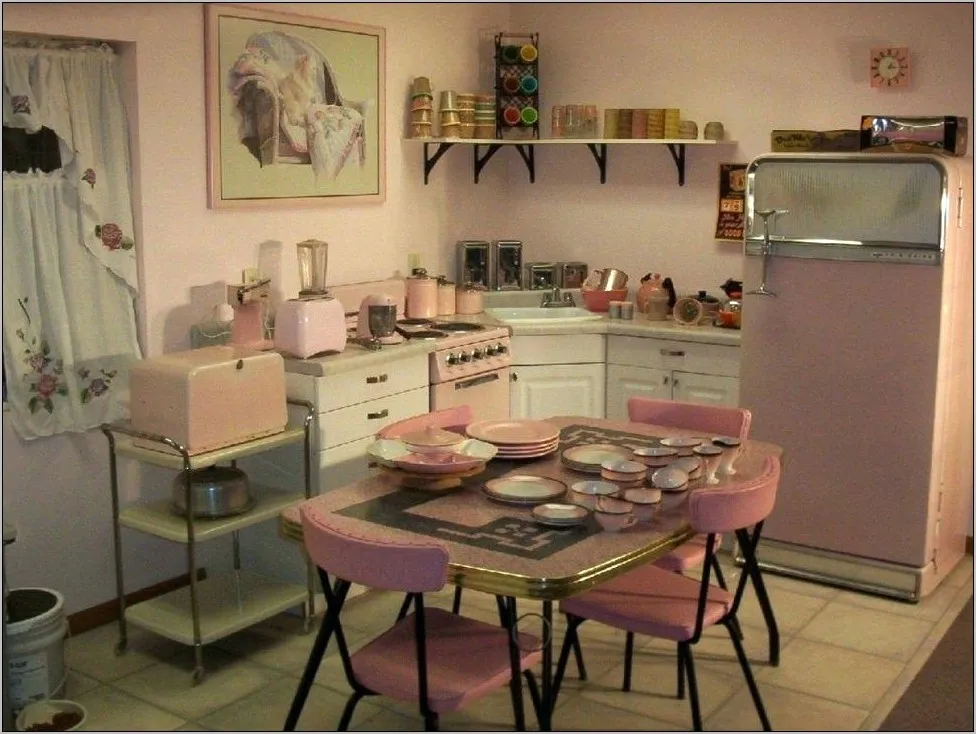
Accessorizing is the final step in bringing the 50s kitchen to life, adding character and personality to the space. The right accessories can amplify the retro vibe, creating a cohesive and inviting atmosphere. Focus on items that reflect the era’s trends, such as vintage kitchenware, playful textiles, and decorative elements that showcase the spirit of the time. From the smallest details to the most eye-catching pieces, each accessory contributes to the overall charm of the 50s kitchen, making it feel authentic and lived-in.
Essential Accessories
Several accessories are key to capturing the look and feel of a 1950s kitchen. Consider incorporating vintage kitchenware, such as colorful mixing bowls, canisters, and cookie jars. These items add a playful touch and can be displayed on open shelves or countertops. Playful textiles like gingham curtains, polka dot dish towels, and floral tablecloths also add a sense of nostalgia. Decorative elements like vintage clocks, wall art, and advertisements from the era further enhance the theme. These accessories should be chosen with care to complement the overall design, ensuring that they enhance rather than detract from the kitchen’s retro charm. The use of specific patterns and colors can tie the entire space together.
Adding Vintage Touches
To truly embrace the 50s aesthetic, consider adding genuine vintage touches to your kitchen. Visit antique stores, flea markets, and online marketplaces to find authentic pieces. Look for items that reflect the era’s design, such as enamelware, metal kitchen tools, and bakeware. Vintage advertisements and prints can be framed and displayed on the walls, adding a touch of historical flair. The use of vintage accessories not only enhances the kitchen’s design but also creates a sense of authenticity. These items should be placed strategically to create visual interest and reflect the era’s spirit. The addition of these items is the final touch in completing the 50s kitchen.
The Floor and Countertops
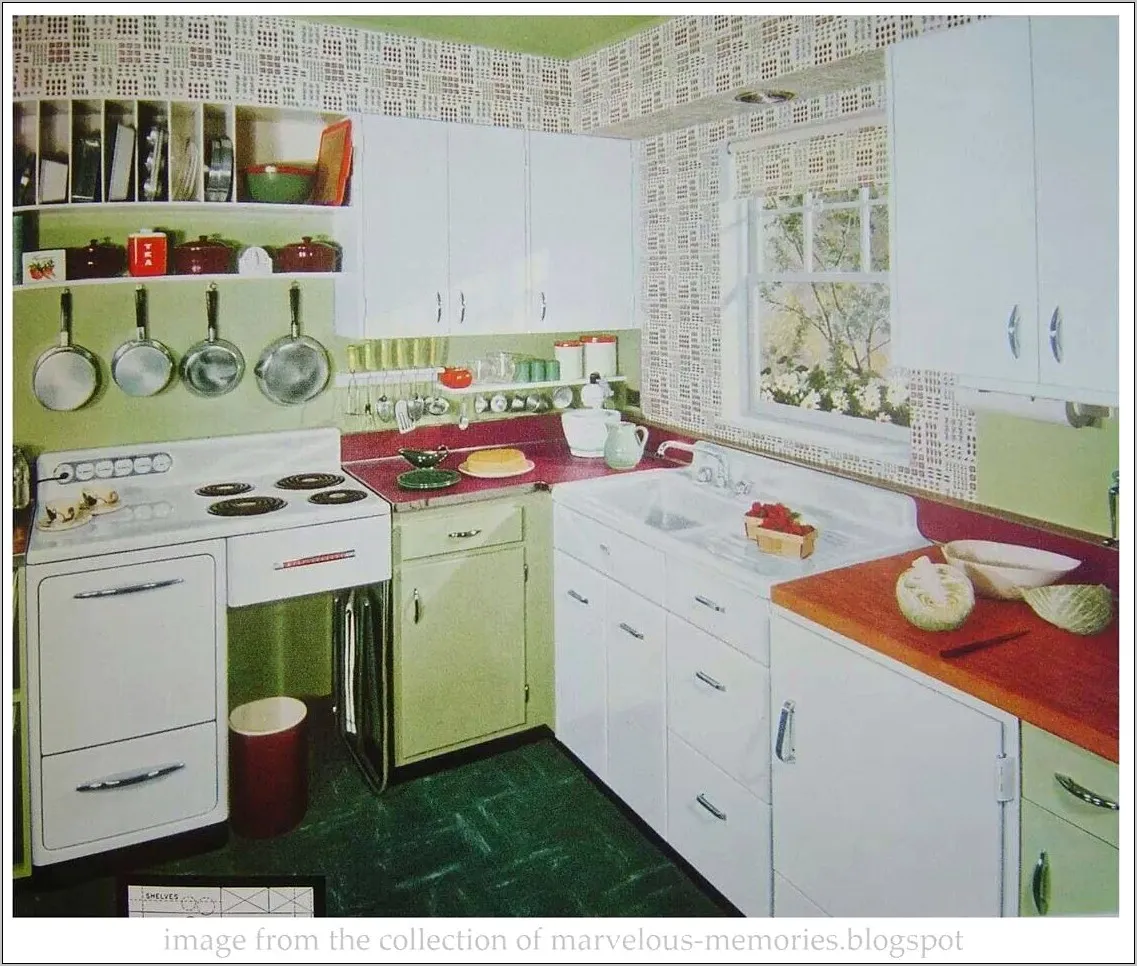
Flooring and countertops play a significant role in shaping the overall aesthetic of a 1950s kitchen. They are essential in contributing to the visual character of the space, setting the stage for the other design elements. Choosing the right materials can create a cohesive look and evoke the nostalgia of the era. The flooring and countertops provide a functional surface that is also a visual statement. The materials of choice for the 50s kitchen are the essence of the design.
Flooring Options for a 50s Kitchen
The choice of flooring can significantly impact the overall look of a 1950s kitchen. Two of the most popular options were linoleum and vinyl tile. Linoleum, known for its durability and colorful designs, was a favorite. It was available in a wide range of patterns, including solid colors, geometric shapes, and intricate designs. Vinyl tile, a more affordable alternative, also offered similar visual appeal. Both linoleum and vinyl tile were relatively easy to clean and maintain, making them ideal for the busy kitchen. Another popular option was black and white checkerboard flooring, which added a touch of graphic design and sophistication to the space. Consider flooring that not only complements your chosen color palette but also reflects the era’s emphasis on practicality and style. Choose materials that can withstand the wear and tear of a kitchen environment.
Countertop Materials
Countertops in 1950s kitchens were typically made of laminate or stainless steel. Laminate countertops, such as Formica, were incredibly popular due to their affordability and versatility. They were available in various colors and patterns, including the iconic boomerang and atomic designs. Stainless steel countertops were another option, offering a sleek and modern look. They were known for their durability and easy maintenance, making them a practical choice for the kitchen. When choosing countertops for your 50s-inspired kitchen, consider materials that reflect the era’s design and functionality. The choice of materials can either embrace the mid-century vibe or create an exciting juxtaposition.
Lighting and Fixtures
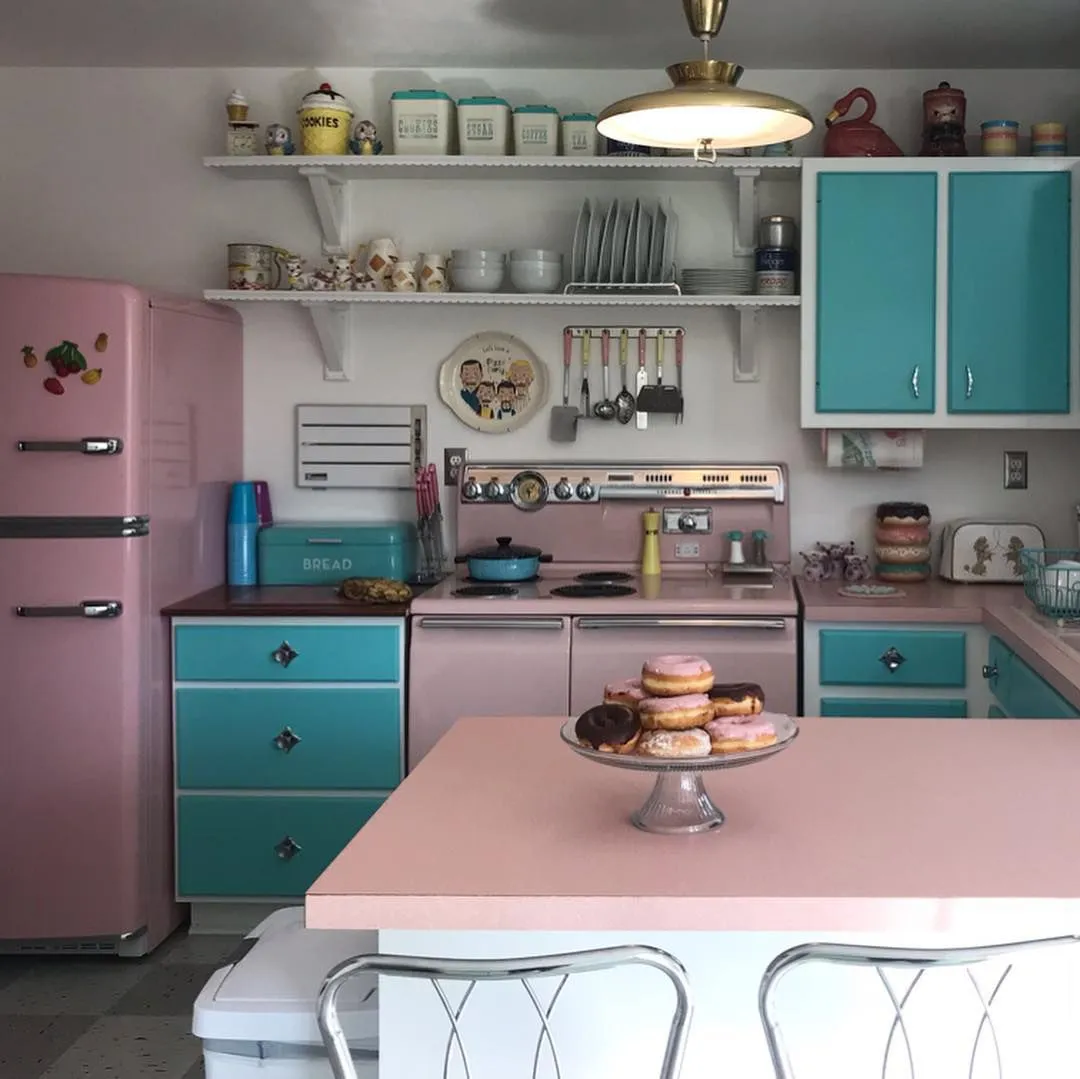
Lighting and fixtures are critical in setting the mood and enhancing the aesthetic of a 1950s kitchen. They add both functionality and style to the space, contributing to its overall charm. The choice of lighting can transform the kitchen, while the style of fixtures completes the design. Whether you want a complete remodel or small decorative touches, the lighting can greatly enhance the 50s aesthetic.
Iconic Lighting Styles
Lighting in a 1950s kitchen was often characterized by its clean lines and functional design. Popular choices included flush-mounted ceiling lights, pendant lights, and under-cabinet lighting. These lighting options provided ample illumination for cooking and dining, while also adding a touch of style. The use of chrome and glass fixtures was common, reflecting the era’s love of modern design. Recessed lighting was also sometimes used, providing a sleek and unobtrusive option. When selecting lighting for your 50s-inspired kitchen, consider fixtures that reflect these characteristics, creating a well-lit and stylish space. Select fixtures that provide a balanced blend of form and function.
Fixtures and Hardware
The choice of fixtures and hardware plays a key role in capturing the essence of a 1950s kitchen. Chrome hardware was a staple, reflecting the era’s love of sleek and modern design. Knobs, pulls, and faucets in chrome added a touch of shine and sophistication to the kitchen. The designs were clean and simple, often with rounded edges and a minimalist aesthetic. You can choose specific fixtures or a complete set to completely remodel a kitchen. When selecting fixtures and hardware for your 50s-inspired kitchen, consider items that reflect these characteristics, choosing pieces that complement the overall design and add an authentic touch.
Creating a 50s Kitchen on a Budget
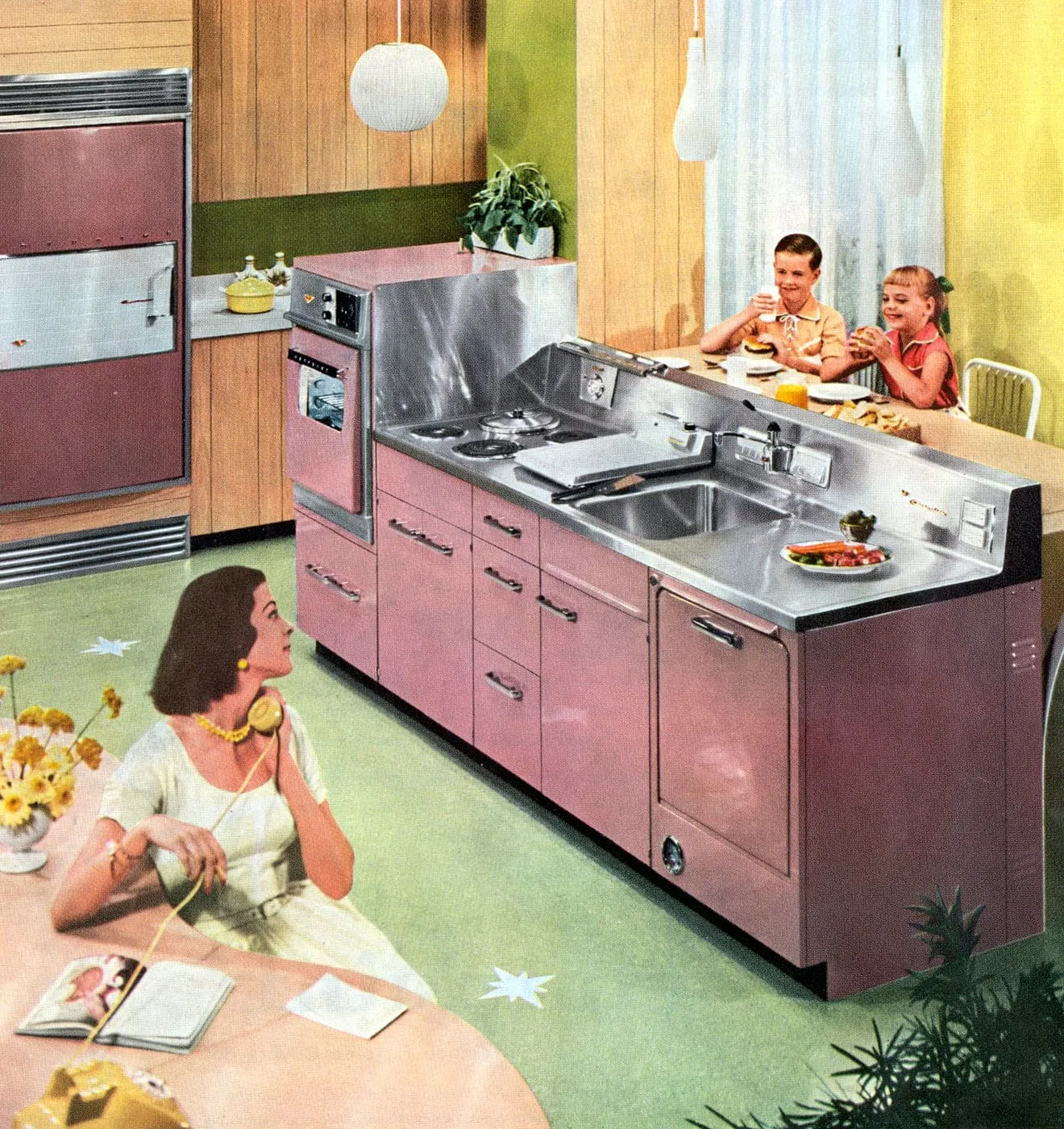
Creating a 1950s kitchen on a budget is entirely achievable. With a bit of creativity and resourcefulness, you can capture the retro charm of the era without breaking the bank. Focus on making smart choices, leveraging DIY projects, and seeking out affordable alternatives. You don’t need a complete overhaul to evoke the essence of the 50s. By carefully planning your approach, you can achieve a stylish and authentic look without overspending.
DIY Decorating Ideas
DIY projects can be a great way to incorporate the 50s kitchen decor on a budget. Consider painting your cabinets in a pastel color, adding new hardware, and creating a custom backsplash. Making your own curtains or reupholstering chairs can save money while adding a personal touch. Visit your local craft store to select the materials for your project. Online resources can provide inspiration and tutorials for various DIY projects. Many of these tasks can be completed over a weekend, transforming your kitchen into a vintage haven. These DIY projects not only allow you to save money but also allow you to customize your space.
Where to Find Affordable Items
Finding affordable items is essential when creating a 50s kitchen on a budget. Thrift stores, flea markets, and online marketplaces are great places to find vintage accessories, furniture, and appliances. Look for items that reflect the era’s design, such as colorful mixing bowls, chrome-legged tables, and retro-style appliances. Garage sales and estate sales can also be excellent sources. Sometimes these places have pieces for sale at reasonable prices. Be patient and persistent. The key is to be open to hunting for bargains and knowing where to look. Affordable items are out there, and you can use them to create a stylish and authentic kitchen.
